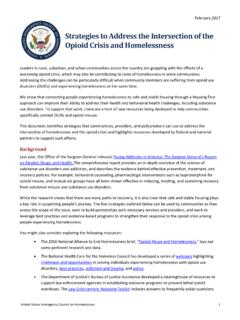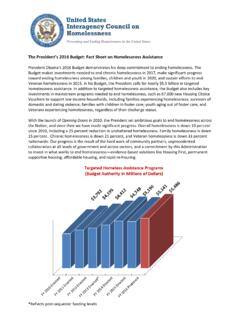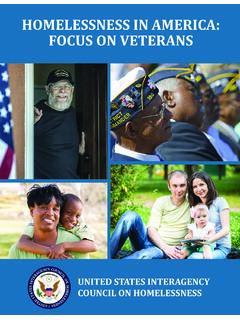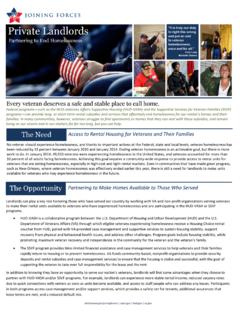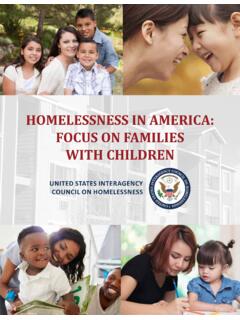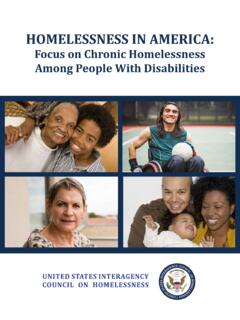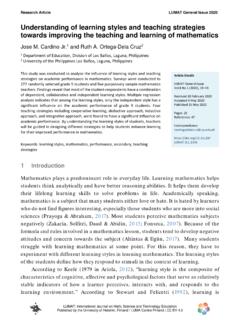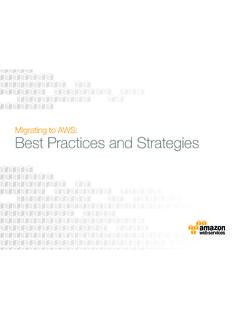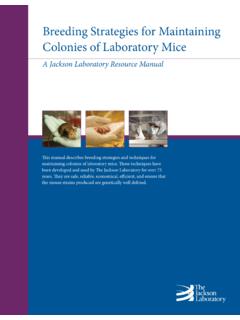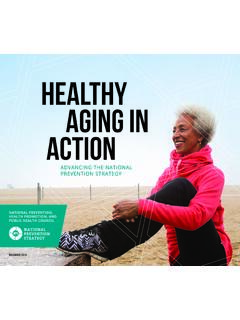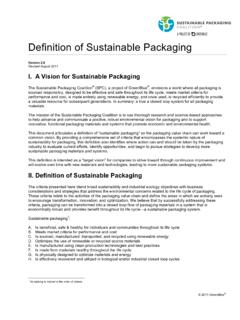Transcription of 10 Strategies to End Veteran Homelessness
1 Version 3: June 2017 United States Interagency Council on Homelessness 1 10 Strategies to End Veteran Homelessness We know how to end Homelessness for veterans . A growing list of states and communities have proven that our approach is working. However, ending Veteran Homelessness nationally takes political will, leadership, collaboration, and coordination among multiple federal, state, and local programs. With our goal in reach, we must redouble our efforts until every community has a sustainable system in place to end Veteran Homelessness once and for all. This second update of our original February 2015 publication fine-tunes our thinking around the Strategies that can make Veteran Homelessness rare, brief, and non-recurring, and provides additional resources for communities to implement them.
2 Federal partners have also developed Criteria and Benchmarks for Achieving the Goal of Ending Veteran Homelessness that can help drive progress in your community. And these case studies, from communities that have ended Veteran Homelessness , may also help you craft your own Strategies . 1. Start at the Top: Get State and Local Leaders to Publicly Commit to and Coordinate Efforts on Ending Veteran Homelessness Public support from your state and local leaders is essential to securing and aligning the resources and partners you need to end Veteran Homelessness in your community. Joining the Mayors Challenge to End Veteran Homelessness , for example, is a great way to promote coordination and ensure accountability across all your partners.
3 Tools: Resources for Mayors (USICH) List of Officials Who Have Signed on to the Mayors Challenge (National League of Cities) List of Communities that Have Effectively Ended Veteran Homelessness (USICH) 2. Implement a Housing First System Orientation and Response To ensure that veterans experiencing Homelessness can move into permanent housing with the right level of services as quickly as possible, communities must shift to a Housing First system orientation. Individual programs and projects within the system should remove as many barriers to their housing and services as possible, accepting applicants regardless of their sobriety or use of substances, poor credit or financial history, or past involvement with the criminal justice system.
4 Staff in shelter, outreach, and housing settings should be trained that substance use, criminal history, or motivation are not obstacles to successful tenancy in housing. Version 3: June 2017 United States Interagency Council on Homelessness 2 Tools: The Housing First Checklist: Tool for Assessing Housing First in Practice (USICH) Four Clarifications about Housing First (USICH) It s Time We Talked the Walk on Housing First (USICH) Using Shelter Strategically to End Homelessness (USICH) 3. Implement a Coordinated Entry System In order to use resources effectively, individual programs must work together as part of a coordinated entry system.
5 That system should match individuals and households experiencing Homelessness to appropriate housing and services based on a common assessment process performed consistently across partners. It should also use a data-driven approach to prioritizing people with the most significant needs. Housing navigators can then be assigned to specific veterans to help negotiate and expedite the entry process into housing by providing assistance with paperwork, identifications, appointments, and other critical steps to getting into housing. Tools: Coordinated Entry CoC Toolkit (HUD) Coordinated Assessment Toolkit (National Alliance to End Homelessness ) Enhancing Coordinated Entry Through Partnerships with Mainstream Resources and Programs (USICH) Lessons Learned from Developing Coordinated Entry Systems: Richmond and Los Angeles (USICH) 4.
6 Set and Meet Ambitious Short and Long-Term Goals by Deploying All Resources Effectively Ending Veteran Homelessness requires the efficient deployment and full utilization of targeted programs like HUD- veterans Affairs Supportive Housing (HUD-VASH) and Supportive Services for Veteran Families (SSVF). Continuums of Care should partner with VA Medical Centers and HUD-VASH and SSVF providers to ensure they are participating in the community s coordinated entry system, to disseminate best practices, and to remove barriers throughout the system. Communities must also work together to identify resources to serve veterans who cannot be served through targeted programs. Many communities commit to ambitious monthly, quarterly, or 100-day housing placement goals to break down the larger goal into focused blocks of time and effort, while pushing their systems to perform with maximum efficiency.
7 Tools: HUD-VASH Best Practices (HUD) HUD-VASH Resource Guide for Permanent Housing and Clinical Care (VA) SSVF University (VA) SSVF System Assessment and Improvement Toolkit (VA) Innovative Ways the Housing Authority of the City of Los Angeles is Working to End Veteran Homelessness (USICH) Version 3: June 2017 United States Interagency Council on Homelessness 3 5. Improve Transitional Housing Performance and Consider Adopting Different Models and/or Converting or Reallocating Resources Into Supportive Housing Ending Homelessness requires providing permanent housing opportunities to people as quickly as possible. In most cases, transitional housing should be used as a bridge to permanent housing, and communities should seek to help veterans currently residing in transitional housing move rapidly into their own home.
8 To ensure that focus, communities should adopt measures of success for transitional housing that include outcomes around housing placement and stability, eliminating or reducing entrance eligibility criteria, and reducing lengths of stay. To determine the amount and types of transitional housing your community needs, conduct a gaps analysis. If you have a larger stock of transitional housing units than are needed, consider converting those programs into bridge or supportive housing. Options vary by funding source and regulations. Tools: Guide to Reallocating Funds in the CoC Program (USICH) Grant and Per Diem Program Resources (VA) Open Letter to Grantees of VA s Grant and Per Diem Program regarding Bridge Housing (VA) 6.
9 Engage and Support Private Landlords as Partners Creating partnerships with private market landlords is critical for moving people out of Homelessness quickly and fully utilizing local, state, and federal subsidies. In high-cost, low-vacancy markets, the challenge of finding available rental units is great. Cities across the country are undertaking landlord engagement Strategies , like recruitment campaigns and risk mitigation, as ways to increase housing options and secure units quickly. Tools: Core Components of Centralized Landlord Engagement Programs and Community Landlord Engagement Initiatives (USICH) Risk Mitigation Funds Community Profiles (USICH) Engaging Landlords to End Veteran Homelessness : Seattle/King County Shares What They ve Learned (USICH) Engaging Landlords: Tips for Housing veterans (VA) Landlord Engagement Toolkit (Community Solutions) Lessons Learned From Landlord Engagement Events (National League of Cities) 7.
10 Identify and Be Accountable to all veterans Experiencing Homelessness We can only solve Veteran Homelessness if we are able to locate and identify every Veteran or Veteran family in need of assistance, and track their progress from initial engagement to housing placement in real time. Through data-sharing agreements, assessment processes, and communication between the local VA Medical Center, the Continuum of Care, and other stakeholders, communities should create a master list of veterans experiencing Homelessness . By tracking person-level data, communities can better monitor progress and hold themselves accountable to housing outcomes. Communities can also use the HMIS Repository and the Veteran Status Query and Response Exchange System (SQUARES) to identify people who have served in the military through a real-time query of a client s personal identifying information.
